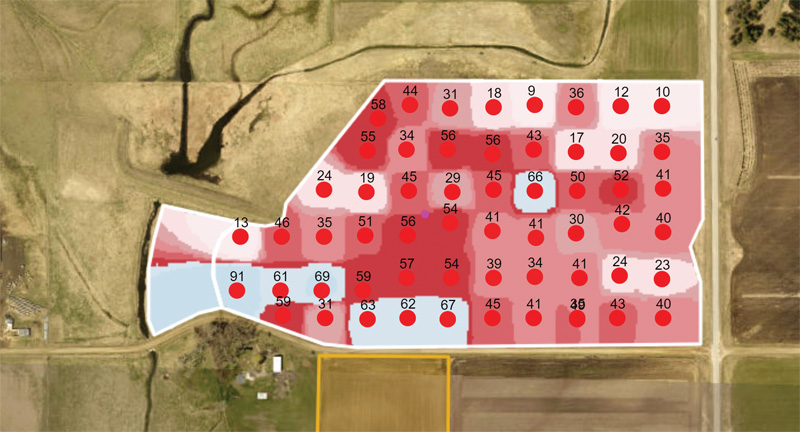Above is a 60-acre field that was sampled in one-acre grids. The numbers listed represent the amount of phosphorus in parts per million in each grid. Note the variance from nine on the low side to 91 on the high side.
As an agronomist, I will tell you that nine parts per million (ppm) is ridiculously low when trying to raise great-yielding corn or soybeans, but 91 is far more than adequate. What farmers are now able to do is create what we call “controller files” based off maps like these, and then apply different rates of fertilizer as they cross the field. If I was creating an application map for this field, I would likely have no phosphorus applied in the 91 ppm grid, with a significant amount being spread in the nine ppm area.
What this allows farmers to do is better invest their fertilizer dollars. Instead of spreading the same rate across the entire field, this type of precise application means all areas of the farm can have a good chance of producing high yield. Plus, it is a great thing for the environment. Instead of having excess fertility in certain areas, those spots are effectively “mined” down to normal levels.
All this is made possible by conducting more soil testing than ever before. The way soil testing used to be done was farmers would go out in their fields, pull a few soil cores down to six inches deep, mix them all together, and then look at that one sample as representative of their field. For example, in this field the average phosphorus level is 42 parts per million. A farmer would likely look at that and apply another 20 to 50 pounds of phosphorus, depending on his yield goal. The nine ppm area would then have insufficient fertility to raise high yield, while the 91 part per million area would be left with excess phosphorus that could potentially erode away, creating an environmental issue, not to mention the wasted dollars that were invested.
My dream is that someday we will be able to sense soil fertility levels not just in one-acre grids — which is 43,560 square feet — but every few feet as we cross our fields. The more we know about our land, the better we can use our fertilizer dollars wisely, the more food we can produce for our growing world, and the more income we’ll have. Soil sampling in small grids or zones and then fertilizing accordingly is an enormous step forward for farmers, and it’s one of the reasons we are seeing new record yields almost every year. The soil is our most valuable resource, and thanks to modern technology and the innovation and hard work of the American farmer, we will continue to improve it.







